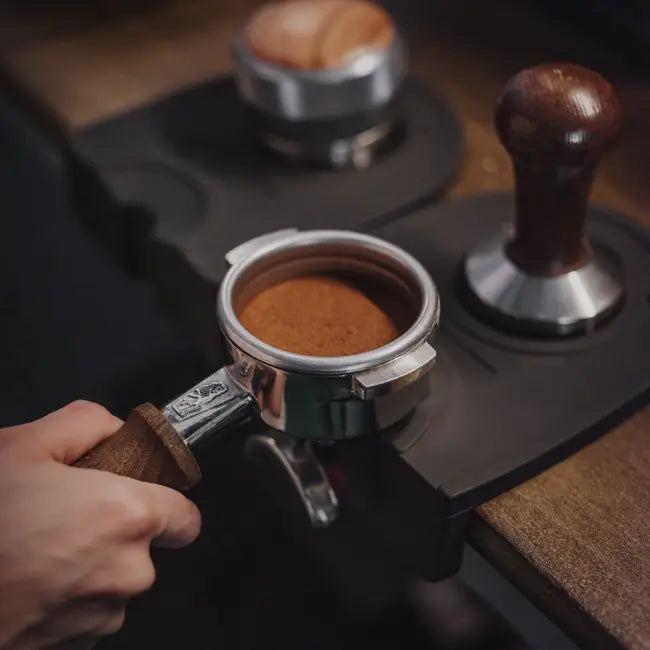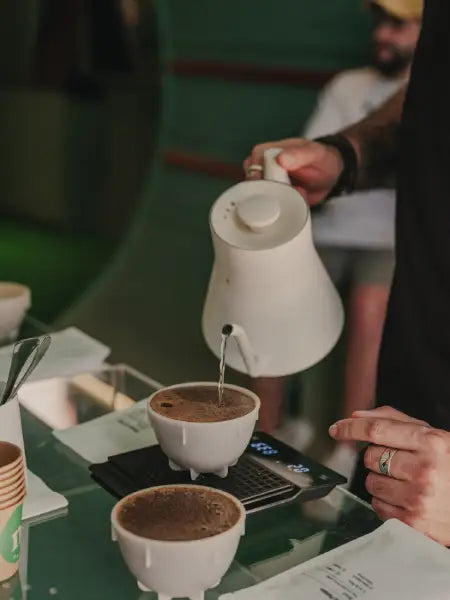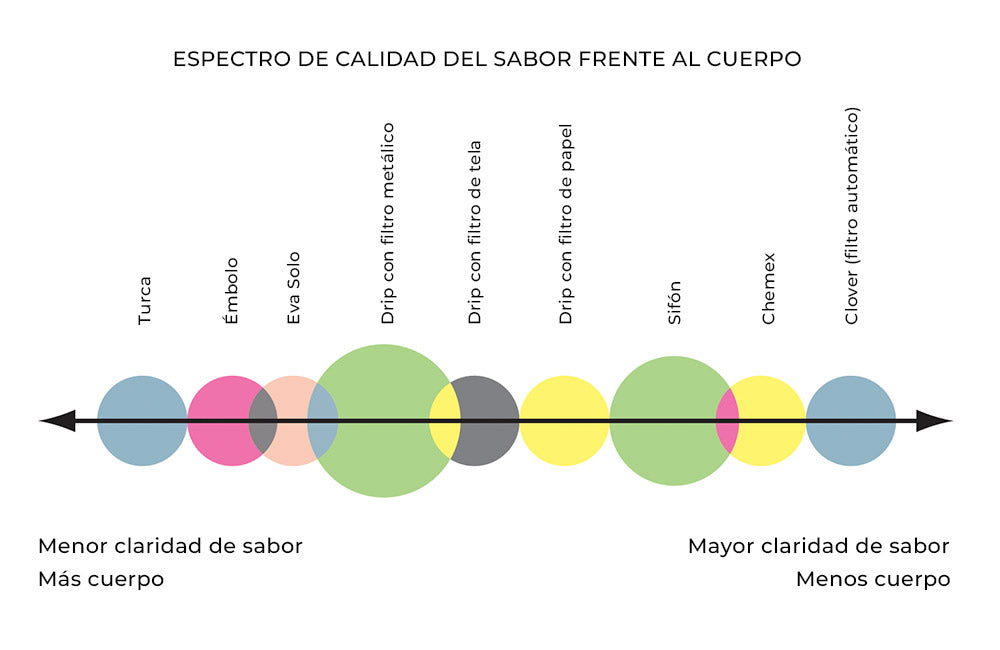Agua para café
El agua puede ser un tema confuso. Por ejemplo, como he mencionado en "Manual del Barista Profesional" y "Everything but Espresso", "alcalinidad" y "alcalino" significan cosas diferentes. Los fabricantes de máquinas se centran en prevenir la acumulación de cal y las incrustaciones, pero generalmente no son conscientes de la química del agua óptima para el sabor, o cómo equilibrar las preocupaciones de prevención de cal versus optimizar sabor. Además, el énfasis histórico de la industria en los Sólidos Totales Disueltos (TDS, por sus siglas en inglés) ha llevado a la idea errónea de que un nivel razonable de TDS significa que esta agua es ideal para hacer café.
Voy a intentar simplificar la discusión para ayudar a cafeterías, baristas y tostadores a la hora de tomar decisiones sobre la calidad del agua. Los puntos importantes a tratar son:
- La alcalinidad es el factor más importante en cómo el agua afecta al sabor del café.
- Es esencial realizar un análisis de agua en laboratorio para determinar que sistema de tratamiento de agua es el más adecuado para una cafetería o tostador. Haz pruebas, no adivinaciones.
- Además del sabor, es importante asegurarse de que el agua no provocará la formación de cal e incrustaciones en tus máquinas de café. Esto es especialmente importante en entornos con mucho volumen, como cafeterías. A veces, es necesario hacer concesiones y permitir un poco de cal e incrustaciones o sacrificar un poquito la calidad del sabor para equilibrar esas dos preocupaciones.
Algunas definiciones

TDS: Sólidos Totales Disueltos. Esto significa exactamente lo que parece: la cantidad de sustancias disueltas en el agua. Históricamente, las recomendaciones de la industria han sido usar agua con TDS de entre 100-150, pero por sí solos los TDS son un número relativamente sin importancia.
Dureza / Dureza General / Dureza Temporal / GH: Esto se refiere a la dureza causada por la disolución de iones de calcio, magnesio y hierro. El GH puede afectar el sabor y el riesgo de formación de cal, pero hay poco consenso sobre los niveles óptimos o el equilibrio ideal entre Ca+ y Mg+.
pH / Potencial de Hidrógeno: una medida de la acidez en una escala de 1 a 14. El 7 se considera neutro. La escala de pH es famosa por ser confusa puesto que es logarítmica. En otras palabras, un pH 2 es diez veces más ácido que un pH 3. El café, con un pH de alrededor de 5, no es tan ácido, a pesar de su reputación. Como referencia, el jugo de limón (pH 2) es mil veces más ácido, y el ácido estomacal puede ser aún más ácido que el jugo de limón. El pH del agua no es un factor particularmente importante cuando se considera el agua para hacer café, ya que los niveles de alcalinidad tienen un impacto mucho mayor en la acidez final en la taza.
Alcalino: Esto significa simplemente que el pH está por encima de 7, indicando que el agua es "básica" y no ácida.
Alcalinidad / Bicarbonato / Tampón / Dureza de Carbonato / KH: Como puedes ver por estos términos, quien creó la nomenclatura de la química del agua debió de ser un misántropo. La alcalinidad es la resistencia de una solución a volverse más ácida cuando se le agrega un ácido. La alcalinidad es, con diferencia, el factor más importante en cómo la química del agua afectará al sabor del café. En términos simples, una mayor alcalinidad hace que el café sea menos ácido y una menor alcalinidad lo hace más ácido. Estos enunciados son ciertos independientemente del pH del agua.
Mi preferencia personal para un café de tueste ligero, light, bien desarrollado es un nivel de alcalinidad de 30 a 40ppm. Tus preferencias pueden ser diferentes, y puede que en algunos momentos elijas, intencionadamente, niveles de alcalinidad inusuales para realzar o reducir la acidez, según el tipo de café y el grado y calidad del tueste. Por ejemplo, puedes optar por agua con una baja alcalinidad para realzar la acidez de un café plano en sabor, etc.
Ten en cuenta que el agua puede tener una alta alcalinidad, pero no ser alcalina. Como menciono en "Manual del Barista Profesional" (2008):
"Una solución puede ser muy alcalina, pero tener baja alcalinidad, y viceversa. A modo de analogía, piensa en lo alcalino como la ubicación de la solución en un espectro político. Digamos que lo alcalino se refiere a estar a la derecha y lo ácido a la izquierda; lo alcalino denota ser conservador, lo ácido denota ser liberal. (¡No pretendo hacer un comentario político!). La alcalinidad, por otro lado, es análoga a la terquedad, o resistencia, a volverse más liberal. Por supuesto, uno puede estar en cualquiera de los extremos del espectro (ácido o alcalino) y aún ser resistente (tener una alta alcalinidad) o propenso (baja alcalinidad) a volverse más liberal".
Agua para hacer café en casa

Si preparas café en casa, hay algunas opciones convenientes:
1. Busca online el informe municipal de la calidad del agua de tu ciudad. Puede ayudarte a saber si el nivel de alcalinidad del agua de tu grifo es alto o bajo, o si el agua contiene contaminantes que quieres evitar y que solo se pueden eliminar mediante ósmosis inversa. Conocer la química de agua del grifo te ayudará a tomar una decisión informada sobre cómo optimizarla para preparar café.2. Agua Embotellada: Nunca he estado en un lugar del mundo que no ofrezca, al menos, una opción de agua embotellada que sea bastante buena para hacer café. Vale la pena leer las etiquetas y buscar online para obtener más información sobre las opciones de agua embotellada en tu zona. Si no puedes encontrar un agua embotellada con el nivel de alcalinidad que prefieres, considera mezclar agua destilada con otras aguas embotelladas para lograr tu objetivo de alcalinidad.3. Compra agua desmineralizada o destilada y agrega sales secas o un producto como Lotus Water Drops. Esto puede ser una buena manera de aprender los efectos de la química del agua en el sabor del café y ayudarte a ajustar tus preferencias. Muchas tiendas de comestibles venden agua de ósmosis inversa a buen precio que puedes comprar y verter en jarras reutilizables.4. Si el agua de tu grifo es naturalmente buena para hacer café, es posible que puedas usar un simple filtro de carbón, como una jarra Brita o similar. Si el agua es dura y/o tiene una alcalinidad muy alta, puedes probar la jarra Peak Water u otro producto similar.
El agua para café en un entorno comercial

Si consultas a los fabricantes de máquinas, te indicarán correctamente el tratamiento de agua que protegerá tus máquinas contra la acumulación de cal (CaCO3). Sin embargo, la mayoría de fabricantes o servicios técnicos no son conscientes de qué química del agua hace que el café sepa mejor.
Una forma sencilla de estimar el potencial de acumulación de cal del agua a diversas temperaturas es utilizar una calculadora online del Índice de Saturación de Langelier (LSI). He mencionado el LSI en varios de mis libros.
Durante muchos años, luché con mi proveedor de máquinas de espresso porque insistía en que usara un ablandador de agua para proteger la máquina. Yo argumentaba que no necesitaba un ablandador, ya que mi agua no producía acumulación de cal en la máquina y, además, suavizar un agua muy dura dañaría el sabor del café, por lo que un ablandador nunca es la mejor solución. Finalmente, cedió cuando le mostré el LSI.”
En años más recientes, la industria ha evitado los riesgos de los ablandadores de agua y ha favorecido sistemas de ósmosis inversa con válvulas de mezcla. Estos sistemas eliminan aproximadamente el 90% de los sólidos disueltos en el agua mediante ósmosis inversa y ofrecen la opción de mezclar el agua de ósmosis inversa con agua del grifo filtrada con carbón activado.
Dejarme que os muestre un ejemplo de cómo utilizar un sistema de ósmosis inversa con válvula de mezcla. Supongamos que el agua de tu grifo tiene:
80 TDS
60 GH
60 KH
pero prefieres una alcalinidad (KH) de 30.
El agua de ósmosis inversa tendrá una KH de 6 (supondremos que elimina el 90% de los sólidos disueltos en el agua). El "agua para la mezcla" que solo ha pasado por un filtro de carbón tendrá una KH de 60.
Si utilizas un 55% de agua de ósmosis inversa y un 45% de agua de mezcla, el resultado será:
.55*6 + .45*60 = 3.3 + 27 = 30.3 KH
Ten en cuenta que, si bien los sistemas de ósmosis inversa son comunes en las cafeterías, no son apropiados en lugares con agua de grifo blanda. Por ejemplo, una cafetería en Manhattan puede tener un agua con 25 TDS y 15 KH. Eliminar cualquier mineral de esta agua sería un error, y la cafetería solo debería usar un filtro de sedimentos + filtro de carbón para eliminar sabores y olores no deseados.
Haz pruebas, no adivinaciones
Siempre les pido a mis clientes que hagan un análisis de agua en un laboratorio antes de elegir un sistema de tratamiento de agua. Tengo laboratorios en lo que confío, y, personalmente, prefiero pagar $100-$200 por un análisis en lugar a obtener uno gratuito de una empresa de tratamiento de agua, en parte para no sentirme en deuda con esa empresa y en parte para obtener un análisis completo, que pocas, si es que alguna empresa de sistemas de tratamiento de agua, proporciona de forma gratuita.
Por ejemplo, a continuación se muestran los resultados del análisis de agua en el tostador Prodigal. Como se puede ver, la alcalinidad está ligeramente por encima de mi rango preferido, pero lo suficientemente cerca de ese rango como para que crea que no vale la pena poner un sistema de ósmosis inversa. Estamos satisfechos con el sabor del café después de simplemente pasar el agua por un filtro de sedimentos y un filtro de carbón.

Sobre Scott Rao
Scott Rao es uno de las figuras prominentes en el mundo del café de especialidad. Es autor de varios libros, como “Manual del Barista Profesional”, "Everything but Espresso" y “The Coffee Roaster’s Companioin” escritos con la intención de ayudar a la industria a pivotar hacia una forma de entender el café más formada y científica. Gran parte de su tiempo la dedica a la consultoría de tostadores de café alrededor del mundo, impartir clases magistrales sobre el tueste de café y en diseñar equipos de café de última generación.
En Ineffable Coffee llevamos trabajando con Scott desde 2018. Ha sido invaluable poder contar con su consejo y experiencia a través de los años. Fruto de esta colaboración nos alegra poder ofrecer este contenido en español con su total consentimiento.
Artículo escrito por Scott Rao y originalmente publicado en su blog









